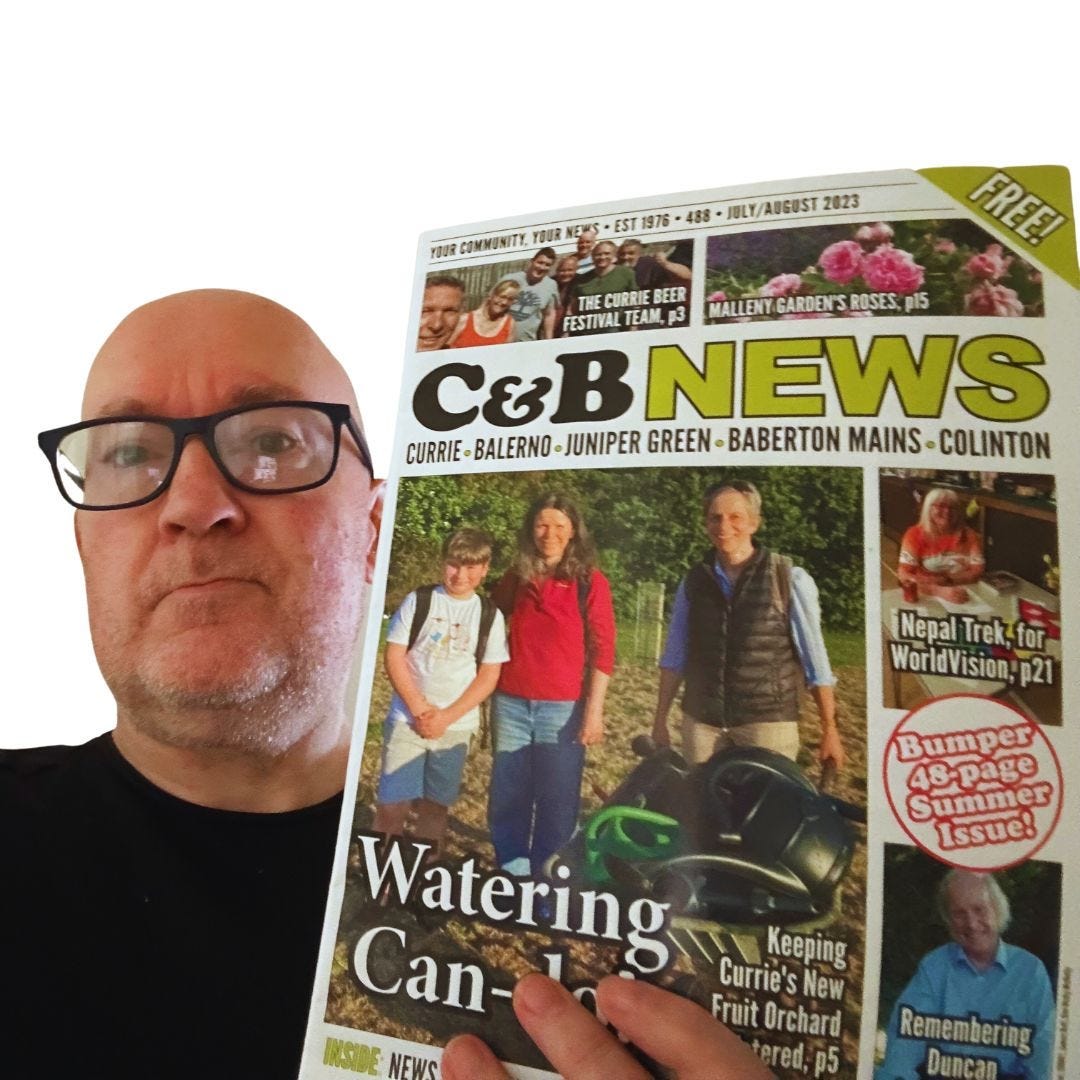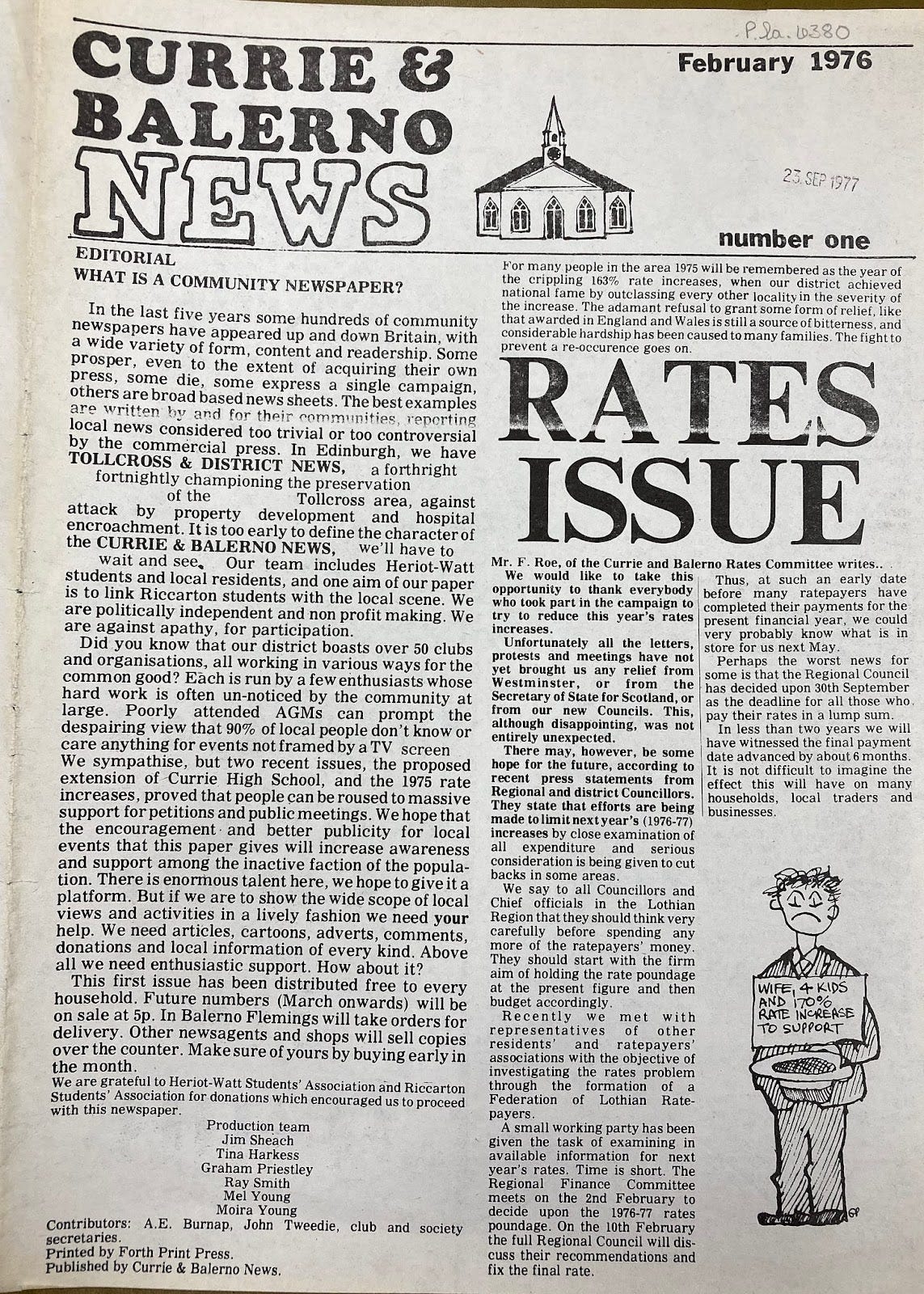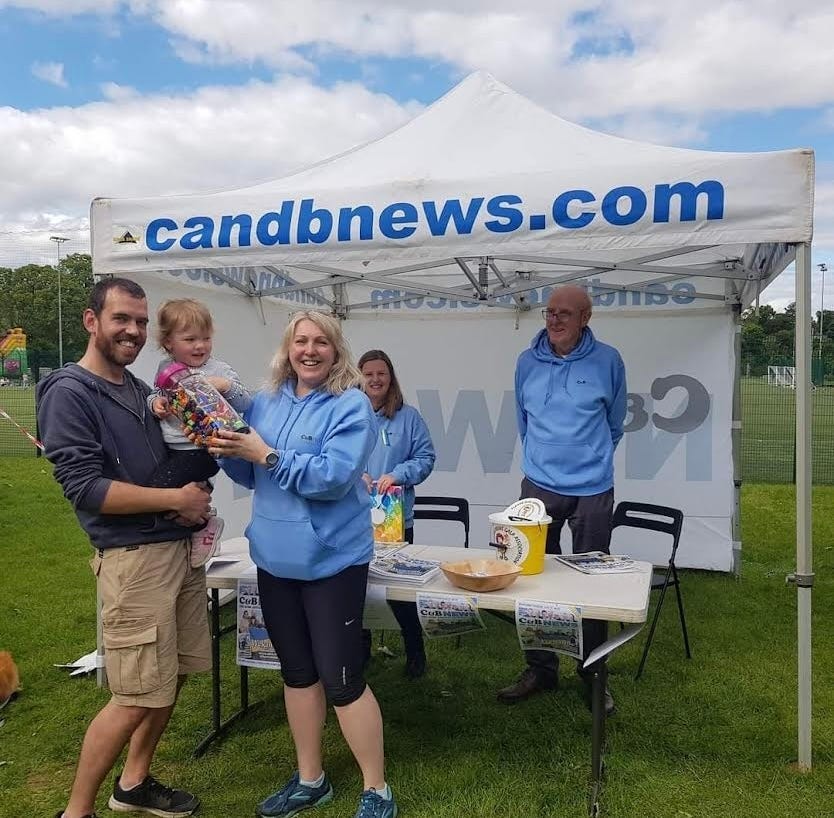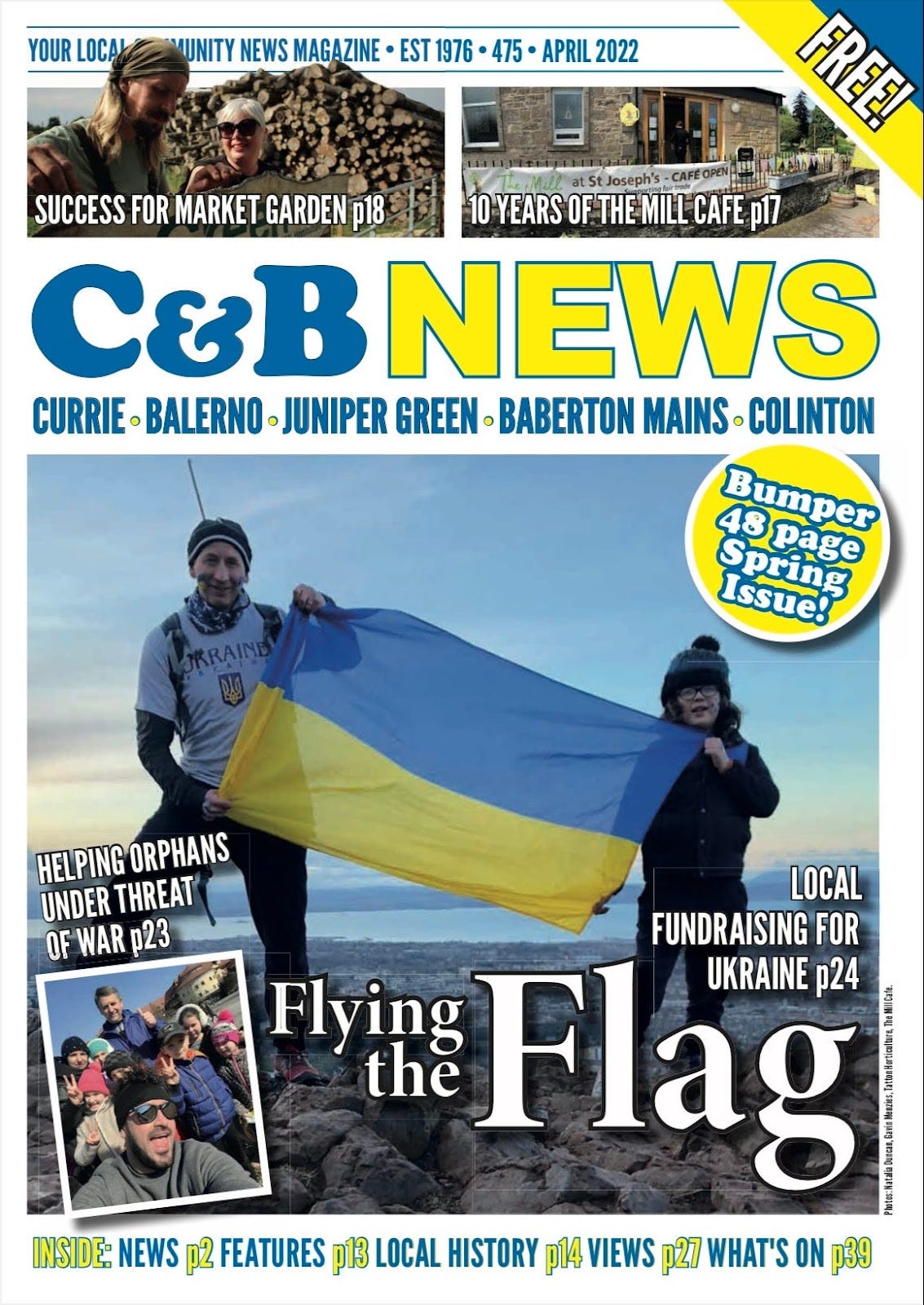How do you find out what's happening where you are?
And what happens when you interview someone on a bike
At our most recent meet up of partner publications, we began by asking folk to share something they found exciting, and something they were finding challenging.
The challenges were all too familiar – funding issues, lack of time, limited capacity. One common concern was about organisation resilience. It’s the perennial ‘what if I get hit by a bus?’ question which plagues independent publishers, when there is reliance on a single person. We don’t have the answers yet, but by collaborating we’re hoping to find new ways to secure and strengthen the provision of local public interest news.
We also got to hear what people were excited about. From creating films on local heritage to holding a panel event discussing South Asian history in the area. One publisher was excited about a new investigation set to hold the local authority’s feet to the fire, while another was just becoming a constituted organisation. It was inspiring to hear about the diversity of work happening across the country.
And then, showing how there’s always room for innovation in local news, Phyllis from The Edinburgh Reporter joined the meeting a little late, as she’d been out interviewing a local councillor… while riding a bike.
I like to rise to a challenge, so excuse me while I dust off the old roller skates and go call our MSP!
Latest News on our website…
MULTI-Million Pound Vision For People’s Palace And Winter Gardens at Glasgow Green – reGlasgow
Rising Numbers of Pensioners Living in Poverty – Orkney News
How the Roma community in Govanhill built a peer approach to removing barriers – Greater Govanhill
Edinburgh Council Accepts East London Street Petition – The Broughton Spurtle
BID For Safer Junctions Legacy Launched By Tragic Cyclist’s Workmates – reGlasgow
Watch: Take a Minute – The Old Coffin Road –The Clydesider
Shetland’s swimming pools and leisure centres reduced – Shetland News
Tell us what you want from The Scottish Beacon
What do you find frustrating in the current Scottish news landscape? What can we do better? How do you find out what’s happening where you are? What type of stories do you want to read?
It would help us hugely if you could take two minutes to tell us!
A warm welcome to our newest publications
The Scottish Beacon is open to all community-based independent publications across Scotland. We want to light the beacon that connects communities up and down the country. If you know of a local publication who should join, let us know.
The Edinburgh Guardian aims to help people engage with local democracy and stay across their community news as efficiently as possible without wading through pop-up ads or problematic social media feeds. It’s currently home to two newsletters: The Edinburgh Minute, a free daily newsletter curating the city’s news and The Edinburgh Culture Minute.
Located in the Scottish Borders, the Newstead News is an award-winning community publishing project run by volunteers. They focus on hyperlocal stories and offer residents the opportunity to write about issues of importance to them. Established in 2020, the Newstead News is produced three times a year and delivered free to every home in the village.
Glasgow’s not finished and reGlasgow.com is reporting on changes and developments in Scotland’s biggest city.
Fios is a fortnightly local newspaper published by Spòrsnis Ltd. They cover topics of interest to the community. All articles are researched, written and produced with the community-owned estate Urras Oighreachd Ghabhsainn, Isle of Lewis.
Meet our partners…
In each newsletter, we’ll introduce you to one of our partners. First up, it’s Paul Fisher Cockburn – Editor of C&B News
Tell us about your publication.
C&B News is a free monthly, volunteer-led community magazine covering the neighbouring south-west Edinburgh communities of Currie, Balerno, Juniper Green, Baberton Mains, and Colinton. The publication features news, articles and comment submitted by a whole host of local residents, groups, community organisations, and political representatives.
Each issue is distributed through a range of local retailers, and is financially supported by advertising (which makes up roughly one third) from local businesses.
Originally launched in February 1976 as Currie & Balerno News, the publication has never missed a deadline, despite some “squeaky bum” moments during its early years.
How/when/why did you get involved?
At the risk of sounding mercenary, I originally wanted to get involved because – as a slightly-struggling freelance journalist – I considered any ‘regular gig’ better than none.
I first applied for the role back in late 2017, but wasn’t even interviewed—for reasons that were all-too-obvious when I later looked back at my original application.
When the editorial post fell vacant again in late 2019, my new application emphasised how my professional skills and experience (several decades working in consumer magazines, etc) could help, as well as underscoring my genuine (albeit latent) enthusiasm for local community journalism.
That seemed to work: I was interviewed and subsequently offered the position in March 2020. Yes, I started working on C&B News just as the UK went into total lockdown thanks to Covid-19. Talk about timing!
What does your average day look like when working for the publication?
C&B News is not my full time job; I have other freelance writing to schedule. So, while I do often think about aspects of a forthcoming issue, compiling it remains a single week’s work.
What does an average day look like? Well, it’s essentially just me, the unshaven ‘hired help’, hunched over my MacBook Pro, drinking coffee, and occasionally ‘stretching my legs’.
Specifically, the week starts with me copying submitted articles into a single document and uploading accompanying images to our Cloud storage—so I don’t misplace anything. There’s an initial edit, to ensure ‘house style’ consistency. On Wednesday our wonderfully effective advertising manager, Moira, submits the issue’s advertisements, which is – at least in theory – when I start digitally laying out pages.
Those days can be 12-hours long, depending on pagination and how much design work I’m happy doing, but essentially it’s just me, hunched over my MacBook Pro.
Tell us about something you are proud of – whether it be a particular story you broke, or an impact you had on an issue?
In hindsight, it has to be what I now call ‘our Ukrainian issue’ (April 2022). It included more than four pages of articles about local residents (of all ages) organising fundraising events, offering friendship to incoming refugees, and – in one case – a local man delivering supplies to an orphanage on the Polish/Ukrainian border.
The choice of front cover seemed obvious: it showed the husband and son of a Ukrainian-born local resident, holding up the Ukrainian flag on the summit of Arthur’s Seat. At the last minute, chiefly (or so I thought) for aesthetic reasons, I opted to change the usual masthead and strap lines to the navy blue and bright yellow of the Ukrainian flag.
Only later did I hear that, at the inaugural meeting of a local support group for incoming Ukrainians and residents, that issue made a really big difference when it came to breaking the ice.
How does the existence of your publication benefit the community you serve?
First and foremost, C&B News keeps its readership informed about at least some of what’s happening in and around the five ‘villages’ listed in the masthead.
Yes, I accept we’re bound to miss many stories – partly because our monthly schedule precludes including them, mostly because I can’t publish articles I’m not sent – but I believe we do a fairly good job, all told. Indeed, I’ve met several people in recent months who appeared to be genuinely proud to live within a part of the world capable of producing a local publication on the “bumper” scale and quality that C&B News has now reached.
Does the magazine help engender a sense of community? Like most other local and hyperlocal news providers, yes. Not just within the five villages, though, but in the wider context of them being close (and generally friendly) neighbours along the upper Water of Leith valley.
What made you want to join the Scottish Beacon?
From its earliest days, C&B News has “stood on its own two feet”. Indeed, until April 2020, it even had a cover price—originally to help cover its production costs, later simply to raise funds for local good causes.
It has never – unlike many of Edinburgh’s now long-lost (and increasingly forgotten) community newspapers (Wester Hailes Sentinel, Craigmillar Festival News, and North Edinburgh News, etc) – regularly relied upon public funding.
This long tradition of self-reliance has served the publication well down the decades, but my own personal feeling is that you can also learn a hell of a lot that’s useful from your peers, and that today's C&B News can potentially benefit from the print and online experiences of others—especially if those publications, audiences and challenges are slightly different to ours!
That’s also why I’ve kept an interested eye on two-dozen community newspapers/magazines from across the UK.
Why does independent, community-based local news matter?
It matters because, for people to enjoy the benefits of being fully engaged citizens, everyone should know what’s happening where they live, so they can understand their communities and react to both internally emerging ideas and externally imposed actions.
It matters because, even if largely produced by “amateur journalists” (ie, people who are not paid for their writing, photography or videography), such “news” is necessarily more verifiable, reliable and trustworthy than people’s opinions as found on social media.
It matters too, especially in times of crisis, when decisions about what’s happening on the ground can have a real impact on individuals’ lives.
Ultimately, it matters most because, without those independent, community-based local news providers, we’re talking about the kind of journalism – that allusive “first draft of history” – that otherwise just won’t get produced by larger news providers who necessarily have to operate at scale despite any intentions to do otherwise.
Elsewhere in local news…
Hani Barghouthi, Campaigns Manager at the Public Interest News Foundation writes on the need for a global set of values when negotiating the relationship with big tech companies. Read his opinion piece, Making Big Tech pay for the UK news they use on The Scottish Beacon.
The University of Central Lancashire postgraduate course in Journalism Innovation and Leadership is once more open for applicants, with fees covered by the Google News Initiative. Find out more here.
I often find myself thinking about the alignment between local libraries and local media outlets. There have been some interesting experiments that have brought the two together, and this article on the topic from Nieman Lab, contains more food for thought.
Some of our partner publications are non profit. And this research paper entitled How Loud Does the Watchdog Bark? A Reconsideration of Losing Local Journalism, News Nonprofits, and Political Corruption explores the impact these type of outlets can make. The American Journalism Project found two key takeaways: Non profit news organisations can shape local democracy and funding for nonprofit news matters.










